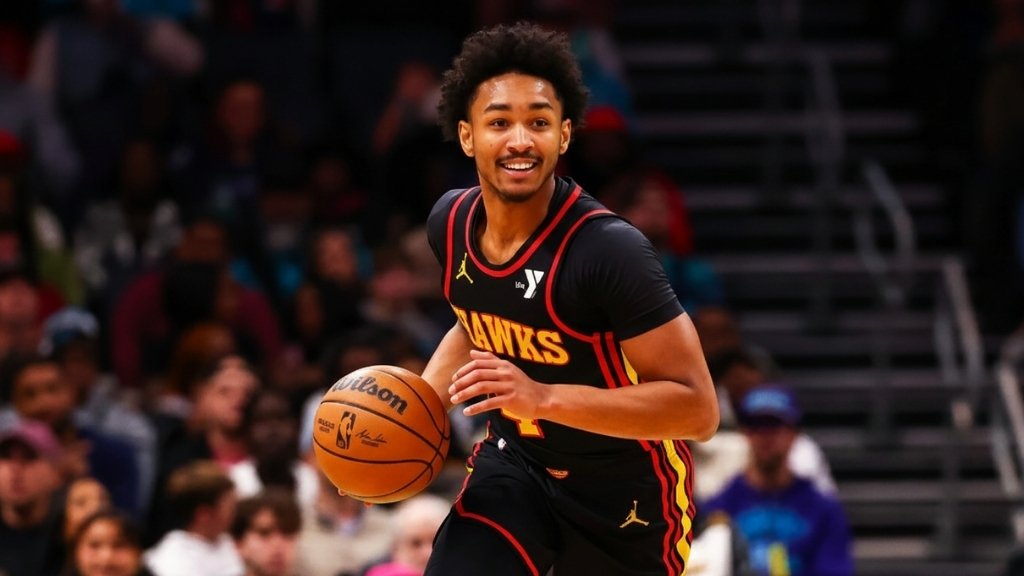The Kobe Bufkin trade gives the Brooklyn Nets a low-risk swing at a 2023 mid–first-round talent while the Atlanta Hawks bank flexibility. Brooklyn acquires a young combo guard with two-way tools; Atlanta receives cash considerations, a tidy bit of roster and cap housekeeping as it retools its guard rotation.
What’s official
- Transaction: Atlanta trades Kobe Bufkin to Brooklyn for cash considerations.
- Who he is: A 2023 first-round pick (No. 15) out of Michigan, Bufkin is a 6-4 guard with length, burst, and defensive upside.
Those two facts set the foundation; everything else is fit, development, and timing.
Why the Hawks made the move
- Roster clarity: Atlanta’s backcourt has been crowded. Offloading a guard who needed minutes to develop helps the depth chart make sense for opening night.
- Cap and flexibility: Taking only cash back preserves optionality for in-season maneuvering and typically generates a modest trade exception the front office can use later.
- Reset the timeline: Bufkin’s early NBA time was choppy due to injuries and opportunity. Selling now trades uncertain development for certain flexibility.
Bottom line for Atlanta: This is a pragmatic, low-drama exit that tidies the books and the bench.
Why the Nets took the bet
- Asymmetric upside: Former top-15 picks rarely cost only cash. If Bufkin pops, Brooklyn gets rotation value without spending draft capital.
- Skill fit: Brooklyn needs guards who can pressure the rim, defend at the point of attack, and play off the ball next to higher-usage creators.
- Development environment: With a coaching staff that values two-way guards and pace, the Nets can give him targeted reps without the pressure of instant star turns.
Bottom line for Brooklyn: It’s a classic “buy-low on pedigree” move that fits a patient, development-first plan.
Scouting snapshot: how Kobe Bufkin trade helps right now
- Handle & downhill burst: He can turn the corner and collapse the paint, an immediate boost for second units that need rim pressure.
- Point-of-attack defense: Length and foot speed project well against lead guards; early minutes will be earned on this end.
- Off-ball utility: Comfortable cutting and relocating; doesn’t need high-touch usage to contribute.
- Swing skill — shooting: The path to closing lineups is a steadier catch-and-shoot three. Even league-average corner accuracy would open the floor for drives.
Role forecast in Brooklyn’s rotation
- Day 1: Compete for backup combo-guard minutes. Expect him to be paired with a steadier ball-handler so he can attack advantages and defend top guards.
- Usage: Second-unit pace setter; defend, run, finish, keep decisions simple.
- Benchmarks to watch (first 15 games):
- Turnover rate under control on drives.
- Positive on/off defensive impact against small-guard lineups.
- Respectable spot-up percentage from the corners.
- G League shuttle as a feature, not a bug: If minutes squeeze, targeted stints can keep the reps high while the jumper stabilizes.
Contract & timeline context
- Rookie-scale track: As a 2023 first-rounder, Bufkin remains on a rookie-scale deal. Brooklyn gains the ability to evaluate him through camp and the early season before facing typical late-October team-option decisions for the following year.
- No pick cost, minimal risk: With only cash going out, the Nets retain all draft flexibility while auditioning a controllable young guard.
What success looks like (short and long term)
Short term (this season):
- Earn steady second-unit minutes with defense and rim pressure.
- Lift corner-three accuracy into “guard you can’t leave” territory.
- Become a reliable connective passer—quick reads, low-mistake possessions.
Long term (next season and beyond):
- Settle as a two-way rotation guard who can close some games when the matchup favors his defense.
- Grow into a credible secondary creator who toggles on- and off-ball seamlessly.
What this signals about each franchise
Atlanta Hawks: Willing to make clear-cut moves to streamline roles and preserve flexibility. This is less about giving up on the player and more about aligning assets with a tighter plan.
Brooklyn Nets: Accumulating inexpensive, controllable talent with upside. The Kobe Bufkin trade is a textbook value play: low cost, multiple outs, and a realistic path to rotation contributions.
The takeaway
The Kobe Bufkin trade is a win of timing and context. Atlanta cleans its books and bench; Brooklyn buys a real chance at a rotation guard for the cost of cash and a roster spot. If the jumper stabilizes and the defense travels, this could age as one of the sneakier smart moves of the preseason.







